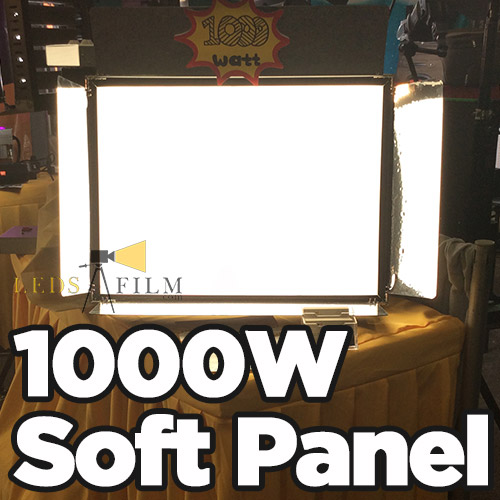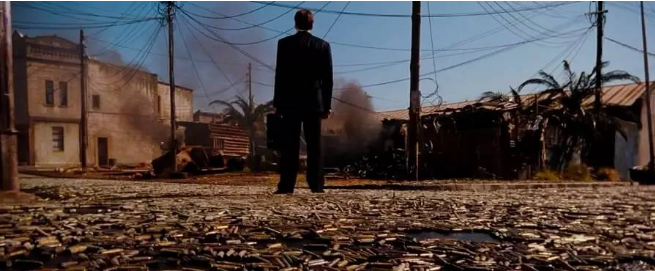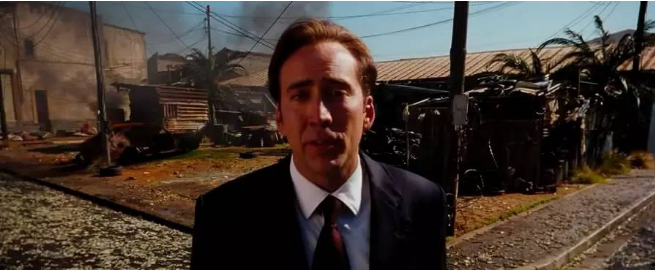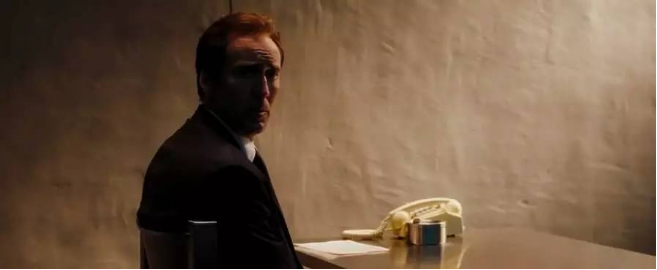What is the light position? Very simple, the relationship between the light source and the angle of the subject.
forward light:
The characters are flat and weak, lacking a sense of three-dimensionality.
Film photography rarely uses forward light as the main light, it will squash the character and weaken the character’s momentum. Many actors, even if they don’t know anything about the art of movie lighting, will hate smooth light like a conditioned reflex, because the forward light will make their eyes uncomfortable.
Of course, forward light is not useless. Squashing characters and depriving them of momentum is also part of the narrative. For example, in the movie “Looking for a Gun”, the policeman Ma Shan lost his gun. He hurried to his brother-in-law’s house to find out about the situation, and first took pictures of Ma Shan and asked his sister aggressively.
Then came the poor little sister and brother-in-law under the light of the sun. They were squashed by the light and stood side by side in front of Ma Shan, with a helpless expression on their faces, which was very funny.
Front side light:
Taking into account the character image and the three-dimensional sense, it is the most common light position for modeling.
The front side light is a regular choice for photographing people. In other words, if there is no special consideration, the front light position is generally used as the main light of the character. There is a small skill to recognize the front side light, to see if there is a “V”-shaped area on the person’s cheek.
The light texture and contrast are different, and the depth of the “V” is also inconsistent. You need to pay attention when watching the film.
The front side light takes into account both the character image and the three-dimensional modeling, but the ability to portray emotions is weak, or there is no obvious emotional tendency. Look at this screenshot in “In the Mood for Love”, have you found the “V” on the cheek of the character?
Side light:
Show the contradictions and struggles of the characters
Let’s take a look at the side light first. What does it feel like when the light is projected onto the face of a person at a 90-degree angle?
The bulge in the middle of the face divides the face into two distinct areas, one bright and one dark, commonly known as “yin and yang face”. It sounds terrible, and the emotions conveyed are naturally negative!
Specifically, negative emotions are embodied in this way: light and dark appear on the faces of the characters evenly at the same time, and the conflicts of light and shadows express the fierce struggles and conflicts in the characters’ hearts, or portray the distorted and divided psychological world.
We can also roughly associate light and darkness as good and evil, life and death, right and wrong, angels and demons, etc., and write these violent conflicting messages on the face, not the side light.
Yuri, the protagonist in the movie “King of War”, has hated and even feared violence since he was a child. He wanted to keep his family away from weapons and violent conflicts throughout his life, but he relied on arms trafficking and bloody conflict to get rich. This character is a typical symptom of a split personality. When dealing with the character’s use of light, the side light is used throughout the film.
The first scene of the movie is on the ground full of bullets. Accompanied by fierce gunfire, the protagonist stands alone in front of the ruins, carrying a suitcase from the back.
Then, the protagonist turns around and begins to tell the audience the story of him, a warmonger.
This is the protagonist’s first appearance in front, close-up, overhead angle, showing a humble appearance. The light on the face is from the side light angle, the contrast between light and dark is huge, and the highlight part is close to overexposure. This shot portrays the war-monger’s guilt, split personality, and internal contradictions, which set the tone for Yuri’s character image in the entire film.
It was the first time that he witnessed gun violence by Russian gangsters and was horrified!
This film can be regarded as a textbook on the use of side light, and it is worth reading. Of course, what is really awesome about the film is the handling of the end. The arms dealers escaped legal sanctions. The film thus raises a huge social problem-who should bear the responsibility for the proliferation of guns, and who is right and who is evil? Or is it both good and evil? Faces divided into light and dark leaves us with huge question marks!
